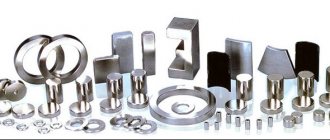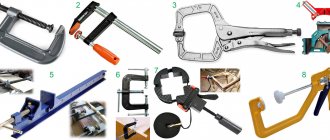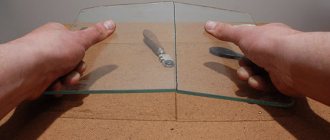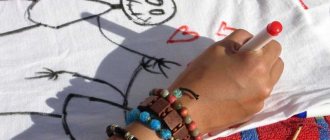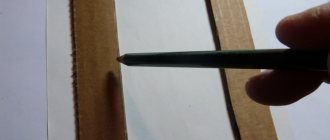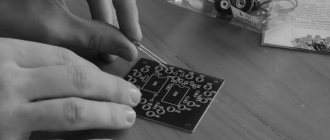It has long been known that well-chosen, good light for video shooting can make even a budget video camera or smartphone shoot much better.
And this does not always require buying expensive equipment.
Let's look at the basic rules and methods of video shooting at home, which will allow you to get a very high-quality picture.
Method number 1 - natural light
The first option is the most famous and free - light from the window. It is best for it to fall on the subject at an angle of 45 degrees.
In this case, a certain volume appears on your face. If you sit directly towards the window, your face will look flat.
However, on the other hand, this can remove wrinkles.
For female vloggers, this can be a significant point.
Also, never sit at a 90-degree angle to a window. Otherwise, you will get a deep and unsightly shadow on the second half of your face.
If you move closer to the window, you will also create color contrast. That is, the background will be a little darker than you. This draws the viewer's attention to the face well.
In general, every time you shoot, try to position yourself as far as possible from the background (wall, closet, etc.). Otherwise, the result is a flat and boring shot.
In addition, your shadow will fall on this surface and distract the viewer.
This manifests itself not only in sunlight, but also under artificial lighting.
However, despite the simplicity of such lighting, there are problems and difficulties here. The light outside the window changes frequently and you are unable to control these changes.
The sun can hide behind a cloud at any moment, and then look out again. It is impossible to instantly rearrange the frame to accommodate these changes.
Switch light problem
The most common question is “Why do LED bulbs continue to light when the switch is off?” people are using illuminated switches indoors. A miniature neon light bulb (sometimes an LED) located inside the housing does not affect the operation of the lamp when the light source is an incandescent or halogen lamp. If you screw an LED light bulb into a lamp, it will often continue to burn dimly even after the voltage is removed.
Why this happens becomes clear if you carefully look at the diagrams for turning on a light bulb through an illuminated switch, given below.
From the diagrams it follows that at load L1 after turning off the lighting there is still a small potential that penetrates through the circuit of the neon light bulb (Fig. 1) or LED (Fig. 2) HL1. In some cases, this is enough to start the LED lamp power circuit. As a result, the switched off LED lamp does not go out completely. It either glows faintly or glows at half-glow, or flickers spontaneously.
Designations on the diagrams:
- HL1 – LED or neon backlight;
- D1 – diode limiting reverse voltage;
- L1 – LED main lighting lamp;
- S1 – illuminated switch.
There are three ways to fix this problem:
- Replace the existing switch with a regular one or remove the backlight from it yourself.
- Install a resistor (Fig. 3) or capacitor (Fig. 4) in parallel with the load. The radio element can be placed in the distribution box, in the lamp socket itself, or on the back of the switch if both the phase and neutral wires pass through it. In the first case, you will need a resistor R2 with a nominal value of 50 kOhm and a power of 2 W or a power of 0.5–1 W, but with a resistance of 1 MOhm. The compactness and low cost of the resistor, in this case, is an undeniable plus. But there is also a negative point - active power consumption and slight heating. The second option with capacitor C1 is free of the negative moments of the resistor and is able to compensate for network interference from other electrical appliances in the room. Installation requires a non-polar capacitive element. It is recommended to use a capacitor with a capacity of 0.1 to 1 µF, capable of withstanding a voltage of 630 volts.
- Removing the barely noticeable glow of several LED lamps is not difficult if they are powered from one switch. To do this, one of the LED lamps must be replaced with a low-power incandescent lamp. The tungsten filament will act as a shunt resistor, allowing harmful current from the backlight to pass through it. As a result, none of the lamps connected in parallel will light when the switch is off, since there is not enough current to ignite the filament.
Method number 2 - natural light + lamp
To make the picture a little more interesting and professional, play with your light sources that are present in the apartment (floor lamp or table lamp).
Add them in combination with sunlight.
In this case, on one side you will have a glare, and on the other there will be light from the window. This gives a completely different picture.
You can also collect all the portable lighting devices that are in the house and illuminate yourself only with them. But this is the worst option, and it rarely ends in success.
Firstly, such light is hard and not diffused.
If anyone doesn’t know, the light for shooting can be soft and hard. For girls, the soft option is more suitable.
For guys, you can use both. Hard light emphasizes the texture of the skin more strongly and creates sharp, deep shadows.
This creates a great artistic effect when needed. Soft light fills all the holes in the skin and it looks more beautiful and smoother.
Don't forget that softness and hardness also depend on the size of the light source. The larger it is, the softer light you will get.
But at the same time, the farther you place it, the more rigid it will become.
The second negative aspect of illumination from portable home lamps is the heterogeneity of the lamps.
If the light bulbs in them are different (power, color temperature), then the whole picture will look very bad and amateurish.
What is better not to do
Solar panels
They can be called a modern method that can really bring results.
But if you use solar panels in a garage, it can be called a disaster. Let's just remember how much average batteries cost now; to light a garage and get electricity for certain work, you will have to pay about 5 thousand dollars for their purchase and installation. This amount is considered unacceptable, even if you are constantly in the garage. They also need to be constantly wiped from dust and their condition monitored. And of course, there is a very high probability that they will simply be stolen.
Wind turbine for garage
The method is good, but only in those regions where there is a strong constant wind. To generate electricity to operate devices, you need a wind of 6 m/s. A light wind can provide illumination, but there are easier ways.
Solar lanterns
Here we will simply write down two main disadvantages:
- The light is dim.
- You constantly need to take it outside to charge, they also quickly break down.
Related article: How to properly make a wooden floor in a bathhouse with your own hands?
Standard backlight scheme
In general, most novice video bloggers use a standard lighting scheme. It consists of 3 sources:
- painting light
- filling
- back
The painter is the main source that illuminates the entire scene. In the original version, it could be light from a window.
At the same time, it doesn’t always have to be clear and sunny outside. On the contrary, in relatively cloudy weather, you can get very soft and cold light.
In this case, the difference between light and shadow will be leveled. And the transition between the illuminated part of the face and the unlit one is not pronounced.
As for fill light, with a budget option, you can again use natural lighting. How to do it?
Very simple. Use a standard reflector or reflective surface.
They are much cheaper than softboxes. By experimenting with distance and angle, you can easily highlight the shadow side of your subject.
If you don't have a factory reflector, make your own using foam and foil.
Next, to separate the object from the background, we move on to a backlight source. An ordinary portable standard lamp will do here.
It is better to take a model on a clothespin. It can be easily adapted to a variety of places.
Screw an LED or energy-saving light bulb with a temperature of 5000-6500K into it, and hook it behind the subject to any tall object (hanger, closet shelf). Just so that she doesn't get into the frame.
This backlight should be located behind the “actor,” approximately opposite the key light from the window. It will help separate it from the general background.
A visual three-point diagram when combining natural and artificial lighting will look like this.
Results
Source: clipchamp.com
Lighting quality is one of the key factors when creating a video. A classic option that is suitable for videographers and video bloggers who care about the beauty of the picture is a lighting scheme with three sources. Natural light can be used as the main source, but it is less predictable than artificial lighting. A single light source will work well for a number of scenarios: a ring light for beauty bloggers, an LED table light for product reviews, and an on-camera light for on-the-go photography.
Softboxes, which can be placed on one or several sources at once, will help soften harsh lighting.
In conclusion, I would like to note that the search for a suitable lighting option is determined, first of all, by practice. Only based on your requests, with the help of trial and error (unfortunately, you can’t do without it) you will be able to choose a scheme that best suits you and your audience.
Video Lights
What lamps are best to choose for illumination when shooting photos and videos? The ideal option is energy-saving with a temperature of 5500 Kelvin.
But they are sold mainly in special stores with photographic equipment. In addition, they are large, expensive, not very comfortable and unsafe.
They are very easy to break. However, do not forget that there is mercury inside such products.
Therefore, professionals advise choosing LED lamps from well-known companies Philips and Osram.
They have more consistent quality in terms of color rendering and stated color temperature than many other companies. They are sold in regular supermarkets.
Choose the most powerful 12-14W models with a color rendering index CRI of 85% and higher. The bigger, the better.
The difference between a CRI greater than 90 and much smaller values is quite significant and visible even to the naked eye. Not to mention the camera.
Try never to use cheap Chinese lighting products for photography and video shooting. Even the LED panels with which Ali Express is littered are treated with caution.
They often give a greenish tint. Therefore, it is better to take proven brands.
The color temperature of home video lamps should be at least 4100K. These same light bulbs can be used in softboxes.
They are quite suitable for highlighting human skin. 5500K is more expensive and harder to find.
Many experts also advise buying an on-camera light. These are rectangular or round ice panels with 160 or 216 LEDs.
However, such light is more operational than stationary. Even with a diffuser, it gives a harsh and not particularly good result. If you, as a cameraman, go out at 1 am to film an accident, then this option is perfect for you.
It is mobile and bright. But this is not a vlogging light that should be used to constantly illuminate your face. It can only be used to highlight the background.
When directed at a person, such an ice panel will also blind, forcing you to squint.
By the way, enlarged versions of such panels with 600 LEDs are also sold, with the ability to adjust the brightness.
This is already a more acceptable option, with the exception of one BUT. They are expensive. And this does not fall into the category of budget light.
Also be careful when adjusting brightness using dimmers.
Because of them, even good light bulbs can produce a strobe effect.
LED lamps begin to flicker and pulsate when the brightness decreases. Moreover, this may not be noticeable to the naked eye.
There are generally models of lamps that can operate for a long time on compact batteries.
With them you will not depend on the distance of sockets and get tangled in the wires of your carriers. But here again the question of price arises.
Homemade LED illuminator for photo and video shooting
Last winter, our musical group came up with an idea - to shoot a video, or rather a small movie, based on one of our favorite songs. We came up with a good script, our artists (who are also the main hero and heroine) literally drew every frame - how everything should look. The scenes were rehearsed. All that remained was a matter of technique - wait for the snowfall required by the script and go filming. Well, and, in fact, technology. There was no question about what to shoot with, two good digital SLRs and manual lenses produced an excellent cinematic picture. Another issue is light. Almost all the scenes are at night, and the attempt to use the available light was unsuccessful. We needed illuminators, and with autonomous power supply - no need to look for a connection in the middle of the city. We tried several video lights rented from wedding photographers and realized that there needed to be a lot more light - we needed to be able to use umbrellas, diffusers, etc., but the video light only allowed us to illuminate a close scene from the camera's side. As a result, it was decided to make the illuminators ourselves. The terms of reference were as follows: the device should replace a halogen illuminator with a 200 W bulb, consume a minimum of electricity and run on a twelve-volt battery. The ability to change the divergence angle of the light beam is desirable, and the entire structure should not cost like an airplane.
The Cree CXA2530 LED matrix was chosen as the light source. Why her? Firstly, it was on sale. Secondly, Cree provides very detailed documentation for its products, unlike Chinese ones. Relatively decent color rendition and stability of characteristics over time are also important. And for these matrices we discovered an excellent series of reflectors from Ledil. To implement the idea, during the next trip to Kyiv (the Ukrainian post office works much better than the Russian one), three sets were purchased from the online store beriled.biz, including the LEDs themselves, boost drivers designed for these matrices and delivering the required stabilized current of 1 A at voltages up to 45 V and wonderful reflectors Ledil Lenina CN13349_LENINA-W-DL. What is so special about these reflectors? They consist of two parts - the reflector itself and a plastic ring-flange with two holes for screws and a large hole for the matrix, with which the latter is pressed against the radiator. At the same time, the problem is solved - how to attach a 24x24 mm ceramic square to the heat sink without any holes. The reflector is attached to this ring via a bayonet connection, which is common to the entire series of reflectors - they are large and small, smooth, stepped, “crumpled” and matte, at different angles and in different shapes (including “slanting lights”). So you can buy a whole bunch of different reflectors and change them depending on your shooting needs. Perhaps the most important thing in any LED lamp is the cooling system. LEDs emit heat like a good CPU, but their operating temperature is the lower, the better. Firstly, as the temperature rises, the efficiency decreases - at one hundred degrees it can drop by one and a half times. Secondly, at high temperatures, LEDs quickly degrade. Therefore, the cooling must be good and for a forty-watt LED assembly it must be something like a processor cooler. Just a light bulb buzzing with a cooler is already too much, so let the cooling be passive. Various companies produce a wide range of radiators specifically for LED lighting. There are even ones specially designed not only for Cree CXA25xx matrices, but also for the reflectors we selected - with holes for self-tapping screws in the right places. We couldn’t find any of these on sale, so we had to settle for a computer cooler. At the nearest computer store, I bought a cheap cooler for the now obsolete Socket 775 GlacialTech 5066Cu for testing. The radiator in it is a “sun” - a core from which rays-ribs diverge. A copper core was found in the core - which is important for such a concentrated heat source. The radiator required some minor modifications. Coolers are designed to be blown by a fan. Even “passive” ones work inside a housing in which air flow is created. Therefore, their ribs are made more frequent - the surface area is larger, and the increased aerodynamic resistance is still easily overcome by the fan. For natural convection, these ribs are an insurmountable obstacle, so they do not work at all, air does not penetrate between them. The solution is to thin out these edges into one. You can break out every second rib, but this is labor-intensive; it is easier and better to bend it to the adjacent one. The first experiment with a matrix stuck with thermal paste on a radiator showed that there is not enough of it. The temperature quickly reached critical levels and forced the power to be turned off. So I had to run to the store again and buy another one. Two radiators were twisted together with thermal paste at the junction - and a check showed that this “sandwich” was already quite enough.
All that remained was to install the flange from the reflector in place, screwing it onto two self-tapping screws. I screwed them directly between the fins of the radiator - the fastening strength turned out to be quite sufficient. When you repeat, keep in mind: the matrix is ceramic and fragile. Strong tightening, misalignment and excess thermal paste can easily lead to breakage of the substrate. We install a reflector on the flange, and we get a basically working illuminator. A small part separates it from the one working in the case - the driver in the form of a board stuck with thermal tape to some random piece of the radiator, dangles on the wires and is about to come off. Therefore, I had to stuff it into a small plastic box with ears, providing it with good cooling with a radiator from some old motherboard, and show a little ingenuity to secure this box to the radiator.
This is what the assembled illuminator looks like:
We use it to shoot a still life in the workplace right there on the spot.
And finally - about the price. All materials cost about 2000 rubles. The time spent on assembly (not counting a trip to the store for radiators) is about an hour.
Softbox lighting
Now let's talk about the best option. These are, of course, softboxes.
They are usually purchased in sets of 2 pieces. From the same Chinese you can find really good and not very expensive options.
More details
If you don’t have enough funds yet, make them yourself from scrap materials. There is nothing complicated about making them.
The only disadvantage of softboxes is that they take up a lot of space.
Lifehack for the de-energized: turning off the lights now doesn’t bother people
News
- 08:24 “Jelly” business of grandmother and granddaughter - in Armenian Lori they make sweets even for diabetics
- 07:58 It will rain all week in Armenia
- 23:59 The battlefield is Iran: a big game is underway, from the nuclear deal to ballistic programs
- 23:48 US seeks to reduce tensions with Russia - Psaki
- 23:37 Viewers have stopped watching the Oscars - the film award rating is rapidly falling
All news
The network was blown up by a video with a real trick: users decided that after such a miracle, the hated power outages and blackouts will now become a simple matter to them.
The network was blown up by a video with a real trick: users decided that after such a miracle, the hated power outages and blackouts will now become a simple matter to them.
However, the matter concerns precisely the light bulb - the most ordinary, economical one. It would seem that a trick with a light bulb can help if the electricity is cut off and there are no candles at home. But, apparently, a candle can be lit with “God’s help.”
Network activists were shocked by how the heroine of the sensational video made a light bulb burn using an ordinary glass of water. It was enough to lower the base of the light bulb into the water - and the burning candle was ready.
While some representatives of the virtual community cheerfully comment on the video, other users express skepticism and invite people to first check the truth of the miracle, and then express delight.
Source
Solar panel and wind generator
Although panels and wind turbines are no longer particularly rare in our stores, few people would risk installing a solar battery on the roof of a garage far from their home.
The factor of theft and vandalism cannot be ignored here. Moreover, such sources have a lot of disadvantages:
- high price
- Difficulty connecting. Most likely, you will have to invite a specialist.
- purchase of additional equipment - storage batteries
- direct dependence on weather conditions
Best Quiet Studio Light: Godox UL60
The Godox UL60 is a rugged, easy-to-operate, daylight-balanced source. There is no fan, so even during long shooting, the microphone will not pick up extraneous noise.
The Godox UL60 produces 60W of daylight-balanced light, making it a great source of light for small shoots. As you zoom in, this source may become fill or background. Control is carried out by the built-in controller or via Bluetooth on a smartphone.
Sources
Of course, you can hang a warehouse “Ilyich light bulb” of 20 watts and at least be happy about that. However, modern people love comfort; it has already become an integral part of life. And we will no longer be satisfied with such simple and not very functional tools. Therefore, let's choose lamps that will help organize the room well. For creativity, so to speak, you can light candelabra with paraffin candles, but such romanticism is unlikely to be appropriate in most everyday situations. So, you need a lamp. You need to choose it, and for this you need to know in general what they are and how they differ.
Therefore, let's divide the lamps into two groups. That is:
- using a centralized network;
- without electricity.
Best Portable Light: Rotolight NEO 2
Rotolight NEO 2 is small yet powerful. Here you get a high degree of adaptability, which makes it possible to attach the light source to the camera and to a stand in the studio.
On the back is a set of easy-to-use controls. You will be able to precisely adjust the image and color temperature. Compatible with Rotolight disc insert filters. The package includes a set of diffusion filters to soften the light and obtain a more accurate representation of the faces of people in the frame.
There is an adapter included, but the main advantage of this light source is its compactness. It can easily fit into almost any camera bag. When shooting on the go, the lighting runs on six AA batteries, which are sold everywhere. If desired, you can use rechargeable batteries.
If you work with photos and videos, the NEO 2 can be used as a flash in conjunction with the Elinchrom HSS transmitter.
- Brightness : 2500 lumens
- Adjustable brightness : yes
- Color temperature : 2900-7000K
- CRI: 96
- Power source : AC adapter included or six AA batteries
Amazon prices
Homemade oil lamp
In the event of a power outage, and in the complete absence of candles, a kerosene lamp or an LED flashlight, you can quickly make an oil lamp from available materials. For this, an ordinary metal tin can or glass container for pickled vegetables is enough.
Practical tips for making an oil lamp:
1. To create a lamp, you should use only containers made of non-flammable materials that are heat-resistant.
2. Before adding oil, the selected jar should be thoroughly cleaned and dried; under no circumstances should there be a drop of water in it.
3. Use used light bulbs to make small decorative oil lamps.
4. To make a lamp as a decorative accessory on a table or shelf, you need to mix food coloring with vegetable oil and pour red, blue or green fuel into a transparent glass jar (flask, light bulb).
5. It is advisable to give preference to vegetable oil instead of synthetic fuels such as gasoline or kerosene, which emit microparticles of pollutants into the atmosphere.
6. A good wick is made from real cotton sewing threads, collected in a bundle of 10-20 pieces. Hemp, wool or linen are also suitable materials. These threads need to be twisted into a single whole, turning clockwise. The result is a thick rope with a thickness of 0.5 cm or more.
7. You also need an aluminum or metal plate under the lit part of the wick to create a thermal barrier between the flame and the filling of the lamp.
Option 1: with a closed jar
This is a very simple and quick model to make. It is ideal in case of power outages, as well as for additional lighting while camping. The device will be able to work autonomously for several hours.
Material:
• glass jar with a screw-on metal lid;
• a strip of dense cotton fabric 1 cm wide or a thick wick made of cotton threads;
• a bottle of vegetable oil (sunflower, rapeseed, olive, etc.);
• knife and scissors.
Step by step creation:
1. A cut is made on the metal lid using a knife, and the blade is placed on the inside at the beginning of work.
2. Pull the wick into the cut in the metal so that no more than 1 cm of fabric (thread) remains above the lid.
3. Fill an open 500 ml jar with vegetable oil, leaving about 5 cm of free space between the oil and the lid.
4. Using the thread on the neck of the jar, screw the lid on tightly, with the long lower part of the wick lying at the bottom of the container, covered with vegetable oil.
5. The upper part of the wick, which is located above the lid, is ignited with matches or a lighter to make the lamp work.
Option 2: with glass and float plug
Also very quick to produce, this model is less dangerous to use as the flame goes out when the oil is completely consumed. Ideal for illuminating a small area, such as a desk or an evening meal in the absence of electricity. Such a lamp can be improved by adding decorative elements to the water, such as small tangerines, sparkles, colored beads, and dried flowers.
Materials:
• 500 ml jar;
• wine stopper for float;
• a strip of cotton fabric or a thick wick of thread;
• knife and scissors;
• water;
• vegetable oil.
Step by step creation:
1. The wine cork must be drilled strictly in the center so that the cord selected for the wick passes through the hole.
2. The wick is pulled through the hole in the cork and fixed in a position where the long part is located 2 cm below the bottom of the container, and the short part sticks out 0.5 cm above the hole.
3. The jar is filled two-thirds with water, after which vegetable oil is poured in. As a result, there should be a layer of fuel 3 cm thick above the liquid.
4. The lamp is ready for use, all that remains is to light the wick and move the device to the place where lighting is required.
Do it
- Light a movie scene with a lamp or light kit, and then try using natural light. Note the differences.
- Try using filters and/or gels to create a unique atmosphere with your lighting. Upload the video and share it with community members. Ask their opinion about the chosen lighting. What worked and what didn’t?
- Share an idea or creative way to create a good lighting effect.
Lighting without electricity. Alcohol burner
An interesting option for cooking and lighting is an alcohol burner. The simplest version of such a burner can be made from two aluminum cans of cola, beer and similar drinks.
Two bottoms are used. A series of holes are punched around the perimeter of the collar of the upper part. It is advisable to arrange them evenly. If there is no rush, it is better to mark everything beautifully according to the template. The holes themselves should be small. So, they are made with a needle, a thin awl or a nail. A round hole is punched in the middle of the lid to fill and drain fuel. In the working position, this hole is covered with something. For example, a short bolt. So, first they find a suitable plug, and then punch a hole under it.
The two parts of the can move towards each other. It is a good idea to seal the connection. On a hike, this can be done with a small amount of resin. If you act carefully, you can fit the jars so tightly that they will not allow vapor to pass through, without any sealant.
Thin cans will burn out soon enough. So, if you have a choice, use large jars, liter or 0.75. Some types of beer have these. They have noticeably thicker metal, which significantly extends the service life of the burner.
Alcohol is poured into the burner. About a third or half the volume
It is important not to overfill so that there is room for gas formation. It is not the fuel itself that burns, but its vapors
It's much more efficient this way.
In addition to alcohol, kerosene, gasoline and other flammable compounds are used as fuel. The gasoline they use is not pure. Due to too active evaporation, it may burst into flames. You need to add turpentine or white spirit to it. Turpentine can be obtained from oleoresin.
Obviously, under normal conditions, only alcohol is used. The stench from burning kerosene and especially gasoline and diesel fuel does not go well with cooking. For illumination - it will do. But they try to combine these moments. People switch to alternative fuels in extreme conditions when there is no alcohol.
Before lighting the burner, it is heated by moving matches along the bottom. It is necessary for evaporation to begin. Then bring the flame to the burner. It burns perfectly, like gas on a kitchen stove. Gives heat and light.
Cheap lightbox
Tape a sheet of greaseproof paper to the window for a great lightbox.
Transparent objects such as fruits, flowers and leaves are great for this lighting technique. Photo: Claire Gillo
The lightbox itself is a constant flat-shaped light source that allows you to illuminate the subject from behind and get a very characteristic effect. To make a lightbox at home, take a sheet of greaseproof paper and use tape or tape to secure it to the window. This option works best when shooting transparent objects, such as leaves (as in our example) or thin slices of food (cucumber is a great candidate). Although this is a great and simple solution, gravitational forces seriously limit its application. It is also worth considering that the subject also needs to be secured, so stock up on good adhesive tape.
Best Ring Light for Video: Elgato Ring Light
The Elgato Ring Light is an excellent single light solution for video shooting and YouTube streaming. Most ring lights have the LEDs at the front of the ring, but here they are located inside the frame. The result is a ring without hot spots, reducing eye strain during long recording sessions.
Due to the large diameter of the ring, the light itself is soft and calm, resulting in no shadows. This source can be either primary or filler. At the back are the physical controls. Like all Elgato lamps, this one can be connected to a mobile application and change the brightness and color temperature remotely.
A durable tabletop stand is included. There is also compatibility with standard lighting stands.
- Brightness : 2500 lumens
- Adjustable brightness : yes
- Color temperature : 2900-7000K
- CRI: 94
- Power supply : AC adapter included
Prices for Yandex.Market
Elgato Ring Light
Low key shooting
Use candles and a lamp to get atmospheric photos immersed in shadows.
A simple lighting scheme consisting of a lamp and candles. Photo: Claire Gillo
Low key photography is a technique in which the subject is illuminated with low light against a dark background; objects/people are immersed in shadows, resulting in a highly atmospheric effect. Someone described this method as "light and eliminate" and we think that's a pretty good rule of thumb.
You don't need a lot of equipment to shoot low key at home. To get the picture you saw above, two candles and an ordinary lamp were enough. The latter was located to the left of the vase and acted as a key source of light. Candles placed on the opposite side added detail to the flowers. Be careful when photographing dried flowers near an open flame.
Despite the simplicity of the low key shooting technique, it’s not always possible to get the desired result the first time, so you don’t need to give up. If you need a little inspiration, check out the work of Renaissance artists like Leonardo da Vinci (his painting of John the Baptist is a great example of low key lighting) or any other still life artist of the era. Subjects such as dried flowers, skulls, dusty books and fruit are great for low key photography.
Candles
Real candles have been used as a source of light for centuries. Traditionally they were made from beeswax. Today, they are most often made from paraffin or stearin, which, in turn, are made from animal or vegetable fats. Recently, a variety made from soy has come into fashion, since these products melt at lower temperatures and do not emit harmful substances. We must remember that if such candles are lit in a residential area, they gradually pollute the air with harmful chemical compounds. For this reason, it is worth choosing products made from beeswax or vegetable wax; they are safer and healthier than similar synthetics.
Regular candles offer a variety of colors, sizes, patterns, and scents. You can buy massive decorative items or thin ones for installation in a candlestick. The sale also offers models placed in containers - glass, clay, metal or iron. Then, after the candle burns, the user is left with a beautiful container that can be used to store small items or as a vase.
Of course, when using ordinary candles, people should remember fire safety. They should not be placed in places where flammable objects (plastic, polyethylene, fabric) are located, or in a draft. In this case, special attention should be paid to the safety of children and animals.
Lamp from a can
The simplest option for making a lamp, accessible even to kids. By the way, if you involve children in the activity, it will be more fun. What to do:
- find a jar of any shape and size, the main thing is that it should not have cracks;
- wash the jar and wipe dry inside and out;
- wipe the inner surface with strong alcohol or vodka, wipe with a cotton pad, covering the entire surface, including the bottom;
- the thicker the layer of alcohol, the longer the jar will glow;
- take luminescent paint of any shade and a brush;
- apply strokes, dots, strokes of paint to the inner surface of the jar, without covering the surfaces with a continuous layer;
- let the compositions dry, pour glass balls or beads inside the container to reflect light.
Now all that remains is to enter a dark room with the can and make sure that the lamp is working. The beads shimmer, creating a reflection, and the result is real magic. You can make a dozen of these cans, and then organize evening gatherings, a disco or something else funny and cheerful. If you place unusually shaped containers around the area, guests and children on the veranda will be delighted.
Best LED panel for YouTube videos: Neewer LED panel
The Neewer LED Light Bar provides affordable, easy-to-use lighting for any level of YouTube video production.
It offers bright light with accurate colors, color temperature adjustment, and a diffuse filter for more accurate results when shooting faces. More affordable LED panels are rigidly mounted on stands, but in this case a metal U-shaped bracket is used. This makes it possible to tilt the lighting and increases convenience.
The package includes an AC adapter and is also compatible with NP-F550/F970 batteries. This allows you to get rid of unnecessary cables.
There is no stand included, but the panel is compatible with standard floor tripods and desk mounts. If the budget is limited, this panel can become the main source of lighting.
- Brightness : 3360 lumens
- Adjustable brightness : yes
- Color temperature : 3200-5600K
- CRI: 96
- Power source : included AC adapter or NP-F550/NP-F970 lithium-ion battery
Lighting from a Philippine lantern
The Philippine lantern for our latitudes is generally a rare exotic, unfamiliar to few people. It has one advantage - it is absolutely free.
The name of the flashlight came from the places where it was actually invented. By the way, there is a whole volunteer organization engaged in such lighting, with a very telling name - “Liter of Light”.
Everything is based on the refraction of natural light from the sun. This flashlight is made from a plastic bottle filled with water.
The manufacturing procedure is as follows:
- the bottle is thoroughly washed until shiny, all labels are removed
- a rectangular stainless steel screen is placed on top
- The water in the bottle is diluted with chlorine or bleach. These components are needed so that the liquid does not bloom and does not have to be changed frequently.
- the bottle needs to be filled with water 3cm above the screen itself
- a hole is drilled in the roof where such a lamp is fixed
To prevent leaks, all joints are sealed with silicone.
One such flashlight is comparable in lighting power to a 50-watt incandescent light bulb and covers an area of up to 10 m2.
In order to increase the level of illumination, you will have to mount several such devices on the roof.
However, you need to be objective; this method of lighting is more applicable to some kind of shed with junk than a garage where a car worth several thousand dollars is stored. No one in their right mind would put holes in their roof for a water bottle.
Therefore, we will now focus on more practical lighting methods.
